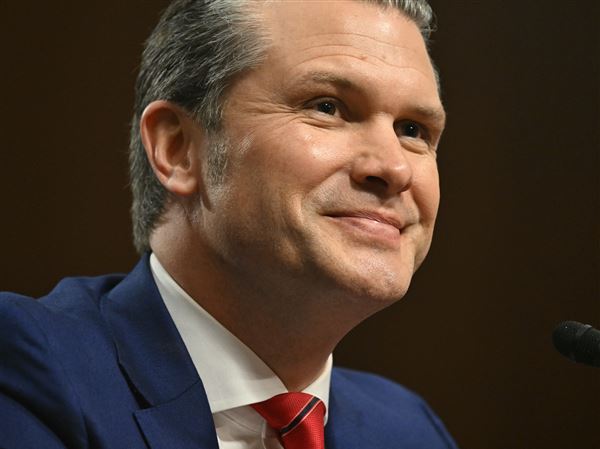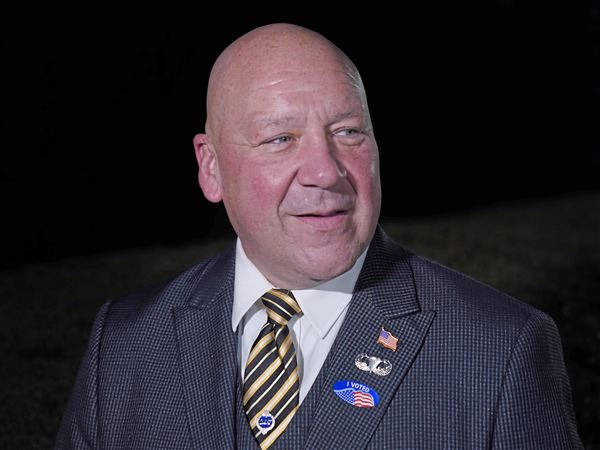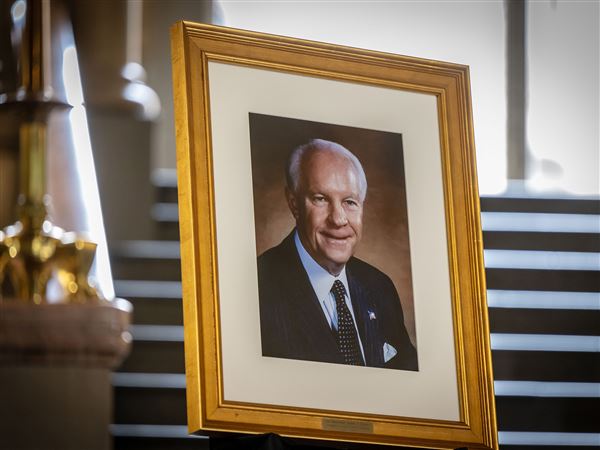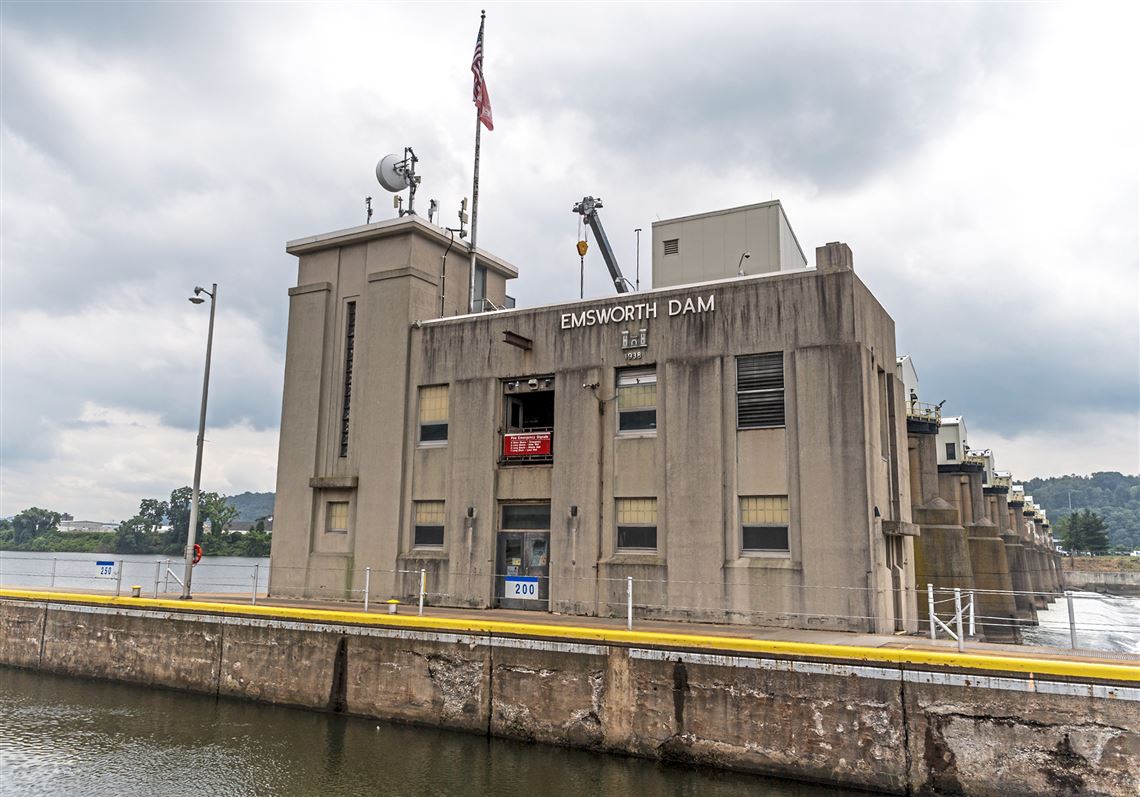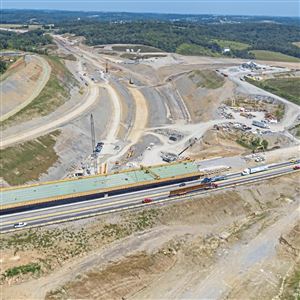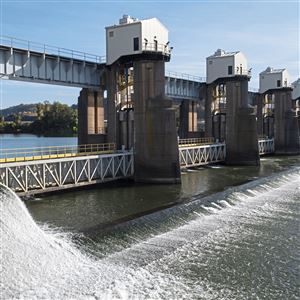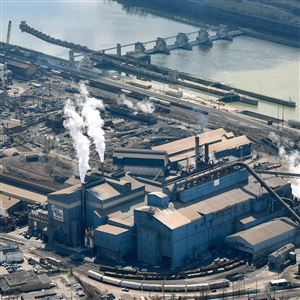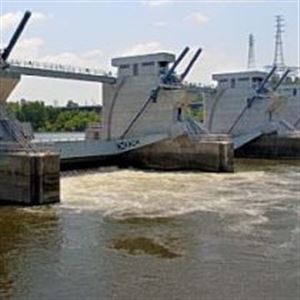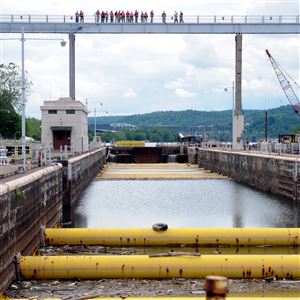WASHINGTON — The oldest lock system on the Ohio River is visibly cracking — a sign of age on a crucial piece of infrastructure after nearly 100 years of the flow of barges and other vessels that enable the region’s economy to function.
The structural issues also reflect the urgency of major renovation projects that have been put on hold, even as the facilities are pushed beyond their recommended life span and today require “extraordinary” maintenance plans, according to the U.S. Army Corps of Engineers.
Bipartisan legislation moving to the floors of the House and Senate could finally move up the long-delayed fixes. Lawmakers have proposed an increase in the federal share of inland waterways projects to 65%, up from 50%. Currently, the other half of project costs are paid for by the Inland Waterways Trust Fund, which is filled with fuel taxes paid by commercial operators: the tugboats that move barges of coal, sand, grain and other commodities.
The increase in the federal share of project costs was approved unanimously earlier this month by the House Transportation and Infrastructure Committee. It followed a similar bill that also was approved unanimously in May by the Senate Environment and Public Works Committee.
Rep. Conor Lamb, D-Mt. Lebanon, who sits on the House committee, led the charge on the cost-share change. The committee’s chair, Rep. Peter DeFazio, D-Ore., congratulated Mr. Lamb in his opening remarks ahead of the committee vote.
“We’ve been working behind the scenes on this one really hard,” Mr. Lamb said in an interview. He said the main obstacle to starting work on the Ohio River locks, called the Upper Ohio Navigation Project, has been the availability of funding.
So the boost in federal dollars “was a huge victory for us,” he said.
Mr. Lamb added he was confident the House and Senate would work out a compromise bill. A key difference between the two: In the House version of the bill, the higher federal share would expire in seven years, while in the Senate version, the cost-share change is permanent.
Mr. Lamb pointed out the higher federal cost-share would be honored for any project begun before that seven-year window closes. The Upper Ohio Navigation Project almost certainly would begin before the seven years is up, he said.
“It’s completely bipartisan; we passed it unanimously, so it makes me think we will probably get a deal,” Mr. Lamb said of the two versions.
The bills were applauded by a range of trade groups involved in the construction of locks and dams and the shipping of bulk commodities.
The American Iron and Steel Institute praised the House bill for helping increase demand for American steel, as the bill also applied “Buy America” provisions to all waterways construction projects. The National Grain and Feed Association called the move “both necessary and prudent” and said it “would expedite such projects and bring the U.S. inland waterways transportation system into the 21st century.”
The Upper Ohio Navigation System project would begin with the Montgomery Lock, which first opened in June 1936, replacing three 19th-century wooden wicket dams.
The lock spans the river in Beaver County, located about 5 miles downriver from Beaver and 3 miles upriver from Shippingport, where a coal-fired power plant and nuclear power plant are located.
It is just downstream from the Royal Dutch Shell cracker plant site, where several years of construction have brought in equipment and machinery too large to ship by rail or truck.
“If that lock were not functioning, there would be potential impacts to their construction,” said Christopher Dening, project manager for the U.S. Army Corps of Engineers, which employs 63 workers across the three lock facilities.
The cracking structure is “really what drives the need to recapitalize,” Mr. Dening said. “Valves can be replaced [as well as] cylinders, gates — but the structural components, as they start to fail, become much more tricky to deal with.”
An estimated 20 million tons of commodities pass through the Upper Ohio River locks, which include the Emsworth and Dashields locks farther upstream, closer to Pittsburgh. Coal barges constitute more than half the traffic, along with aggregates, petroleum and chemicals that support the region’s industry.
In February, the Army Corps announced it would spend $7.7 million this year in previously allocated money on preconstruction engineering and design on the program. The project plans call for a replacement of each auxiliary lock with the construction of one new, larger lock chamber at each facility. The larger lock would measure 110 feet by 600 feet.
Consistent funding
Yet the actual work was expected to be five to seven years away, said Tracy Zea, president and CEO of the Waterways Council Inc., a trade organization representing waterways carriers, port authorities and other shipping groups.
With higher federal funding, the project could begin in two to three years, Mr. Zea estimated.
“This cost-share change is going to accelerate project delivery,” he said. “You’ll add more reliability because you are giving that consistent higher funding level.”
The Inland Waterways Trust Fund is sustained by a 29-cents-a-gallon fuel tax. In 2014, the industry advocated to raise the fuel tax on itself from the previous 20-cents-a-gallon rate.
The cost-share change, if approved by lawmakers and signed by President Donald Trump, would come as a relief to shippers who were alarmed by Mr. Trump’s budget request presented to Congress in February.
Mr. Trump proposed spending no money from the trust fund in the 2021 fiscal year — while continuing to collect fuel taxes and imposing an additional $180 million in user fees on vessels. The budget request must be approved by Congress.
The Upper Ohio project is the Pittsburgh region’s top priority as the Monongahela River locks and dams renovation project was funded to completion and is expected to finish in 2023.
In the meantime, Mr. Dening said, maintenance workers will continue to inspect the locks and submit requests to fund fixes that are largely stopgaps on the larger problem. The last major renovation was in the 1980s, designed to extend the life of the locks by 25 years.
“Obviously, we’ve done that and then some,” he said. “It’s really reached the point we need to recapitalize these locks in order to keep river traffic reliable.”
Daniel Moore: dmoore@post-gazette.com, Twitter @PGdanielmoore.
First Published: July 26, 2020, 10:00 a.m.

